Il tuo Caso Clinico
con i nostri impianti.
Ottieni il voucher per provare
gli impianti TSV® HA MP-1® nel tuo Studio!
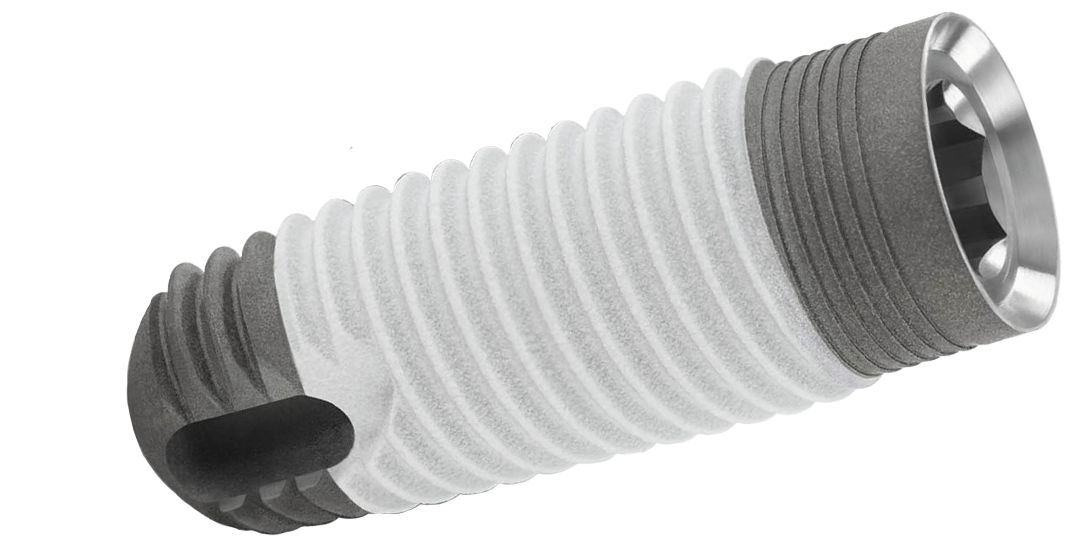
Invia il tuo caso clinico e prova i risultati della ricerca di Zimmer Biomet direttamente nel tuo Studio dentistico. Sperimenta l'alta qualità dei nostri impianti con l'assistenza dei nostri Specialisti.

Insieme facciamo la differenza
Zimmer Biomet ti offre l’eccezionale opportunità di ottenere un voucher per un periodo di prova con gli esclusivi impianti TSV® HA MP-1® su uno dei tuoi Casi Clinici.
Zimmer Biomet invierà gli impianti dentali e lo Start Kit direttamente presso il tuo Studio dentistico.
COSA INCLUDE IL VOUCHER
• Impianti: Max. 2 impianti TSV® HA MP-1®
• Tempo realizzazione: 60-90 giorni
• Assistenza: Specialist nel tuo studio durante l’intervento
• Start Kit: Kit chirurgico TSV® in comodato d’uso
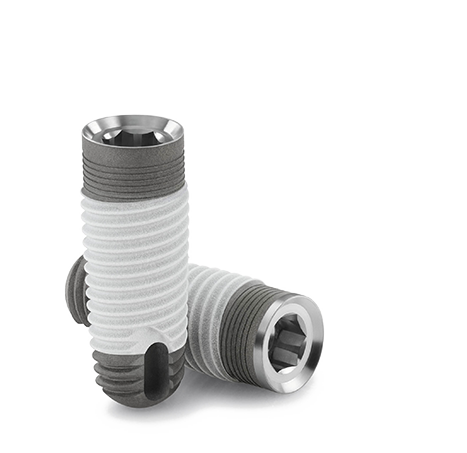
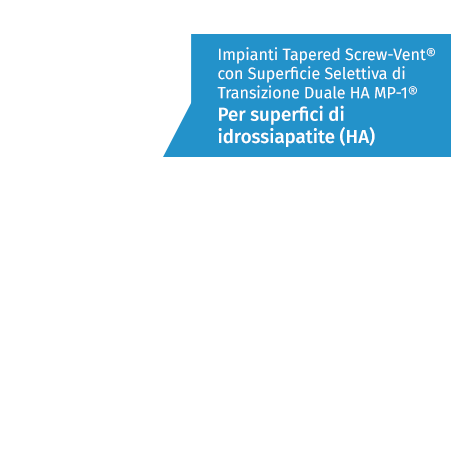
COME PARTECIPARE
Inviaci la relazione di uno dei tuoi Casi Clinici.
I primi 50 casi tra quelli selezionati dai nostri esperti, riceveranno il voucher per la prova in Studio del sistema implantare Zimmer Biomet TSV® HA MP-1®.
GLI STEP

PREPARA
UN TUO CASO CLINICO

RISPONDI
AL QUESTIONARIO

CARICA I TUOI FILES
(INFO CASO CLINICO)

RICEVI L’ESITO
DEI NOSTRI ESPERTI
La tecnologia originale dell’idrossiapatite
Impianti TSV® HA MP-1®
Oltre due decenni di successo clinico e più di 5 milioni di impianti venduti per l’impianto Tapered Screw-Vent (TSV®) che si è guadagnato la fiducia di migliaia di chirurghi in tutto il mondo: convenienza e qualità, esiti positivi per i tuoi pazienti. 1-4
Il sistema implantare TSV® è celebre per le sue prestazioni in quanto è stato progettato per offrire:
• Stabilità Primaria 7,15,18-20
• Stabilità Secondaria 2-14,16-17
• Preservazione dell’Osso Crestale 24-28
• Stabilità Protesica 21-22,29
• Successo Clinico 2-14,27,29

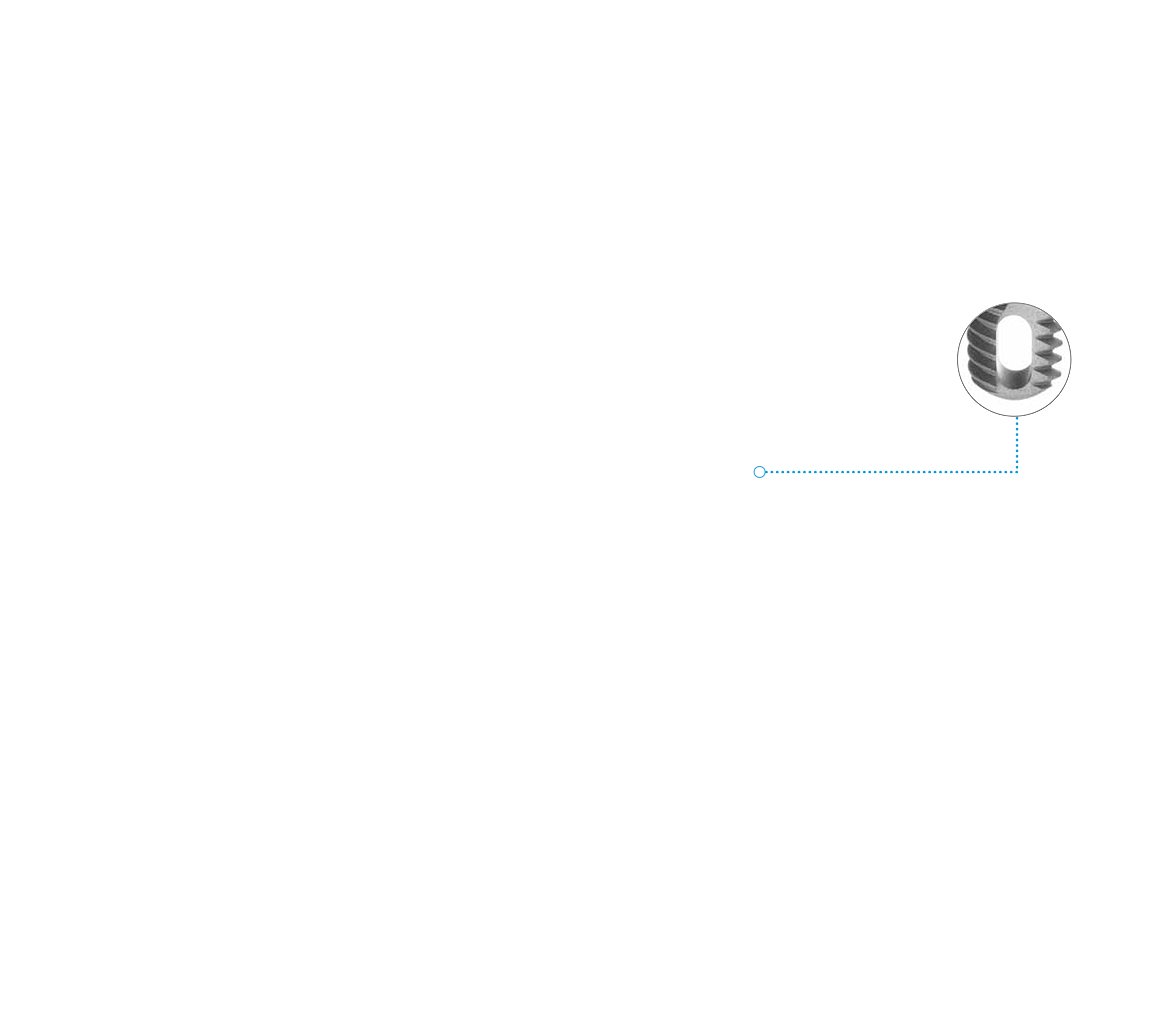


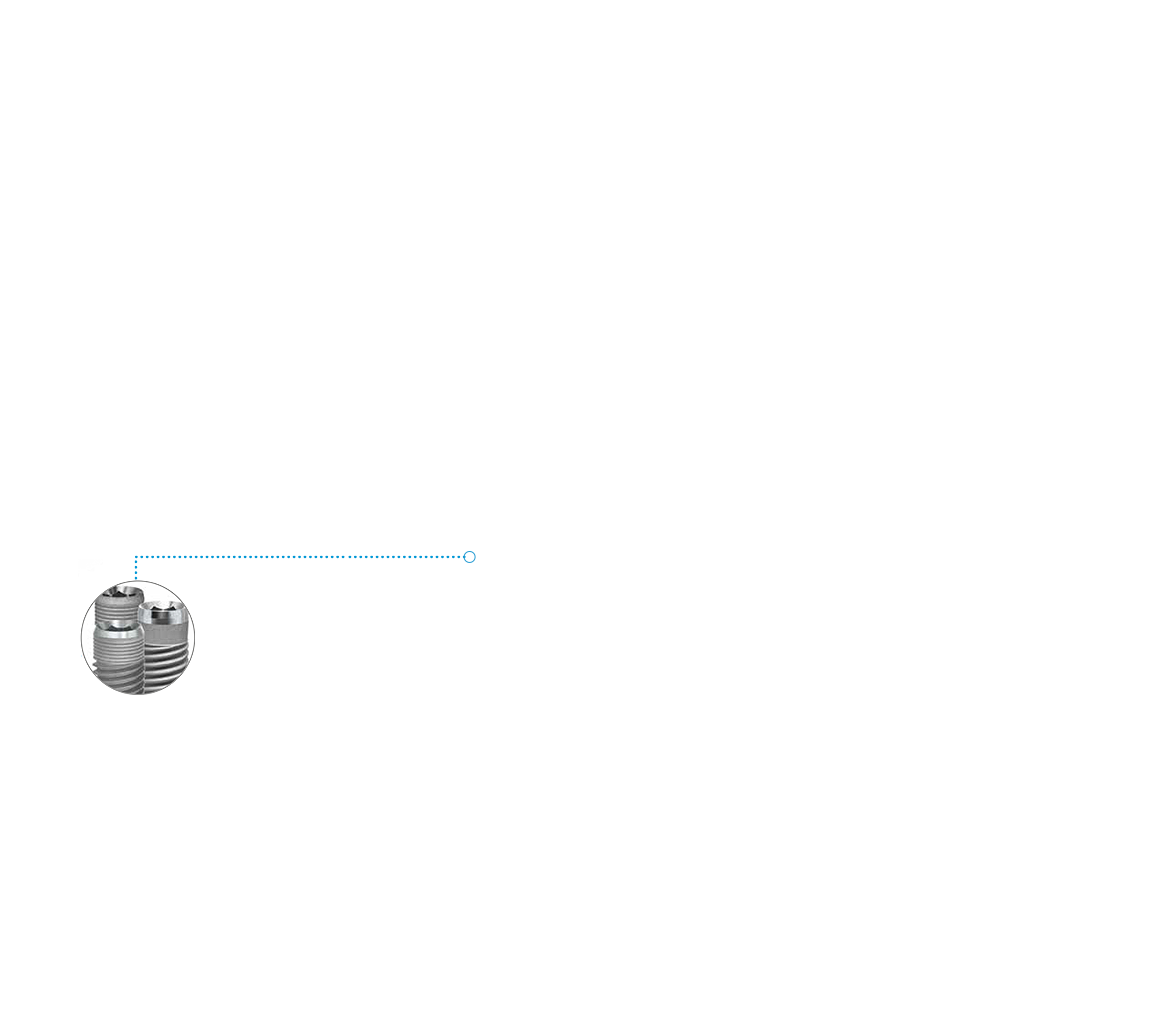

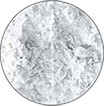
Elevato potenziale osteoconduttivo
Il rivestimento in HA MP-1® di Zimmer Biomet ha fino al 97% di contenuto di HA cristallino, un valore maggiore rispetto ad altri rivestimenti 29-30
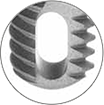
Screw-Vent® e Tripla spira
Filettature di taglio apicali realizzate per un impatto di taglio immediato 1
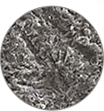
Superficie in MTX®
La superficie microtesturizzata MTX consente di ottenere elevati livelli di contatto osso-impianto o di crescita di tessuto osseo sull’impianto
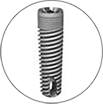
Corpo Tapered
Realizzato per stabilità primaria, il corpo conico in lega di titanio è restistente per garantire un funzionamento affidabile

Microscanalature coronali
Concepite per preservare l’osso crestale. Disponibili in tre configurazioni per superfici coronali 14,23-26

Tecnologia Platform Plus™
Connessione esagonale interna propria, in grado di proteggere l’osso crestale da forze occlusali concentrate 21-22
Da oltre 20 anni, uno dei leader nel campo della tecnologia dell’idrossiapatite (HA)
L’innovativo rivestimento HA MP-1® rappresenta un progresso tecnologico in termini sia di stabilità che di performance. Il proprio rivestimento HA MP-1® è sotto l'uso esclusivo di Zimmer Biomet e ha caratteristiche superiori a quelle dei rivestimenti HA di impianti concorrenti. 29-30
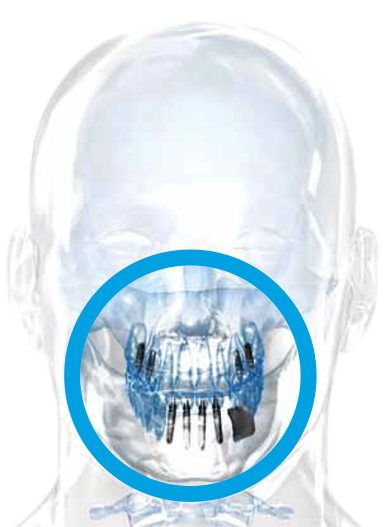
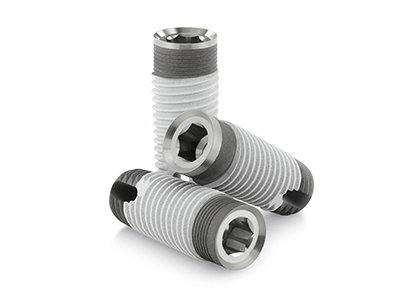
Impianti Tapered Screw-Vent®
(TSV, TSVT e TSVM) con doppia superficie selettiva di
transizione HA MP-1®
![]()
Stabile
La stabilità primaria ottenuta mediante impianti Tapered Screw-Vent consente di eseguire il posizionamento e/o il carico immediato in pazienti adeguatamente selezionati.
![]()
Flessibile
Gli impianti Tapered Screw-Vent vengono proposti con e senza microscanalature crestali e con collare liscio o testurizzazione in cima per massimizzarne la flessibilità, la gestione del tessuto e la manutenzione dell’osso crestale in diverse condizioni cliniche. 14,23-26
![]()
Affidabile
Numerosi studi hanno documentato ulteriormente la qualità e le prestazioni degli impianti Tapered Screw-Vent collocati immediatamente e in un secondo momento, come pure il carico immediato e ritardato. 1-14
Questionario e Invio Caso Clinico
Miriamo a risultati eccezionali
* campi obbligatori

About
Ridefiniamo i confini del progresso per ottenere risultati eccezionali per i tuoi pazienti e per la tua pratica. Non è ciò che realizziamo, è ciò che rendiamo realizzabile.
Con prodotti che definiscono il mercato, programmi innovativi e soluzioni aziendali, ricerca e sviluppo, la divisione dentale Zimmer Biomet Dental vede oltre ciò che è possibile ora.
Unisciti a noi oggi per scoprire cosa sarà possibile domani.
Salvo diversa indicazione, come indicato nel presente documento, tutti i marchi sono di proprietà di Zimmer Biomet; e tutti i prodotti sono fabbricati e distribuiti da Zimmer Biomet Dental e il i suoi partner commerciali autorizzati. Si prega di notare che non tutti i prodotti sono disponibili e registrati in ogni singolo paese / regione. Si prega di verificare con un rappresentante locale di Zimmer Biomet Dental la disponibilità del prodotto e ulteriori informazioni. I prodotti Zimmer Dental e i prodotti Biomet 3i potrebbero non essere compatibili con le radiofrequenze. Si prega di fare riferimento alla singola etichetta del prodotto per informazioni sulla compatibilità. © 2019 Zimmer Biomet. Tutti i diritti riservati.
References
- Data on file with Zimmer Biomet Dental.
- Shiigai T. Pilot study in the identification of stability values for determining immediate and early loading of Implants. J Oral Implantol. 2007;33:13-22.
- Park SH, Lee KW, Oh TJ, Misch CE, Shotwell J, Wang HL. Effect of absorbable membranes on sandwich bone augmentation. Clin Oral Implants Res. 2008;19:32-41.
- Steigmann M, Wang HL. Esthetic buccal flap for correction of buccal fenestration defects during flapless immediate implant surgery. J Periodontol. 2006; 77:517-522.
- Lee CYS. Immediate load protocol for anterior maxilla with cortical bone from mandibular ramus. Implant Dent. 2006;15:153-159.
- Cannizzaro G, Felice P, Leone M, Viola P, Esposito M. Early loading of implants in the atrophic posterior maxilla: lateral sinus lift with autogenous bone and Bio-Oss versus crestal mini sinus lift and 8-mm hydroxyapatite-coated implants. A randomised controlled clinical trial. Eur J Oral Implantol. 2009;2:25-38.
- Siddiqui AA, O’Neal R, Nummikoski P, Pituch D, Ochs M, Huber H, Chung W, Phillips K, Wang IC. Immediate loading of single-tooth restorations: one-year prospective results. J Oral Implantol. 2008;34:208-218.
- Ormianer Z, Schiroli G. Maxillary single-tooth replacement utilizing a novel ceramic restorative system: results to 30 months. J Oral Implant ol. 2006;32: 190-199.
- Artzi Z, Parsori A, Nemcovsky CE. Wide-diameter implant placement and internal sinus membrane elevation in the immediate postextraction phase: clinical and radiographic observations in 12 consecutive molar sites. Int J Oral Maxillofac Implants. 2003;18:242-249.
- Khayat PG, Milliez SN. Prospective clinical evaluation of 835 multithreaded Tapered Screw-Vent implants: results after two years of functional loading. J Oral Implantol. 2007;34:225-231.
- Ormianer Z, Garg AK, Palti A. Immediate loading of implant overdentures using modified loading protocol. Implant Dent. 2006;15:35-40.
- Lee CYS, Rohrer MD, Prasad HS. Immediate loading of the grafted maxillary sinus using platelet rich plasma and autogenous bone: a preliminary study with histologic and histomorphometric analysis. Implant Dent. 2008;17:59-73.
- Lee CYS, Hasegawa H. Immediate load and esthetic zone considerations to replace maxillary incisor teeth using a new zirconia implant abutment in the bone grafted anterior maxilla. J Oral Implantol. 008;34:259-267
- Ormianer Z, Palti A. Long-term clinical evaluation of tapered multi-threaded implants: results and influences of potential risk factors. J Oral Implantol. 2006;32:300-307.
- Rosenlicht JL. Advancements in soft bone implant stability. West Indian Dent J 2002; 6: 2-7.
- Trisi P, Marcato C, Todisco M. Bone-to-implant apposition with machined and MTX microtextured implant surfaces in human sinus grafts. Int J Periodontics Restorative Dent 2003; 23(5): 427-437.
- Todisco M, Trisi P. Histomorphometric evaluation of six dental implant surfaces after early loading in augmented human sinuses. J Oral Implantol. 2006;32(4):153-166.
- El Chaar E, Bettach R. Immediate placement and provisionalization of implant-supported, single-tooth restorations: a retrospective study. Int J Periodontics Restorative Dent 2011; 31(4).
- Consolo U, Travaglini D, Todisco M, Trisi P, Galli S. Histologic and biomechanical evaluation of the effects of implant insertion torque on peri-implant bone healing. J Craniofac Surg. 2013; 24: 860-865.
- Trisi P, Todisco M, Consolo U, Travaglini D. High versus low implant insertion torque: a histologic, histomorphometric, and biomechanical study in the sheep mandible. The Int J Oral Maxillofac Implants 2011; 26: 837-849.
- Mihalko WM, May TC, Kay JF, Krause WP. Finite element analysis of interface geometry effects on the crestal bone surrounding a dental implant. Implant Dent. 1992;1:212-217.
- Chun HJ, Shin HS, Han CH, Lee SH. Influence of implant abutment type on stress distribution in bone under various loading conditions using finite element analysis. Int J Oral Maxillofac Implants. 2006;21:105-202.
- Brunette DM, Chehroudi B. The effects of the surface topography of micromachined titanium substrata on cell behavior in vitro and in vivo. J Biomech Eng 1999;121(1):49-75.
- Cosyn J, Sabzevar MM, de Wilde P, de Rouck. Two-piece implants with turned versus microtextured collars. J Periodontal 2007;78:1657-1663.
- Mazor Z, Cohen DK. Preliminary 3-dimensional surface texture measurement and early loading results with a microtextured implant surface. Int J Oral Maxillofac Implants 2003;18(5):729-738.
- Chehroudi B, Gould TRL, Brunette DM. Effects of a grooved titanium-coated implant surface on epithelial cell behavior in vitro and in vivo. J Biomed Mater Res 1989;23:1067-1085.
- Harel N, Piek D, Livne S, Palti A, Ormianer Z. A 10-Year retrospective clinical evaluation of immediately loaded tapered maxillary implants. Int J Prosthodont 2013; 26: 244-249.
- Ormianer Z, Palti A. The use of tapered implants in the maxillae of periodontally susceptible patients: 10- Year Outcomes. Int J Oral Maxillofac Implants 2012; 27: 442-448.
- Binon PP. The evolution and evaluation of two interference-fit implant interfaces. Postgraduate Dent. 1996;3:3-13.
- Burgess AV, et al. Highly crystalline MP-1 hydroxylapatite coating. Part I: in vitro characterization and comparison to other plasma-sprayed hydroxylapatite coatings. Clin Oral Implants Res. 1999;10:245–256.
- Shin SY, Han DH. Influence of a microgrooved collar design on soft and hard tissue healing of immediate implantation in fresh extraction sites in dogs. Clin Oral Implants Res. 2010;21:804-814.
- American Society for Testing and Materials Committee on Standards. Designation B 348-94. Standard specification for titanium. Annual Book of ASTM Standards. Vol. 02.04. Philadelphia: American Society for Testing and Materials, 1994: 141-146.
- American Society of Testing and Materials International. Designation F67-06. Standard specification for unalloyed titanium for surgical implant applications. 2006.
- International Organization for Standardization. ISO 5832-2: Implants for surgery – metallic materials – part 2: unalloyed titanium. Available online at: http://www.iso.org.
- International Organization for Standardization. ISO 5832-2: Implants for surgery – metallic materials – part 3: wrought titanium. 1996. Available online at: http://www.iso.org.
- Chang YL, et al. Biomechanical and morphometric analysis of hydroxyapatite-coated implants with varying crystallinity. J Oral Maxillofac Surg. 1999;57:1096–1108.
- Lee JW, et al. Preliminary Biomechanical and Histological Evaluations of Implants with Different Surfaces in an Ovine Model: Abstract presented at AO 2013 Conference, Tampa, Florida. (Study of 60 implants [30 each – Zimmer HA MP-1® and Straumann SLActive] placed bilaterally by a licensed clinician in femoral condyles of ovines [6 implants per ovine]).







